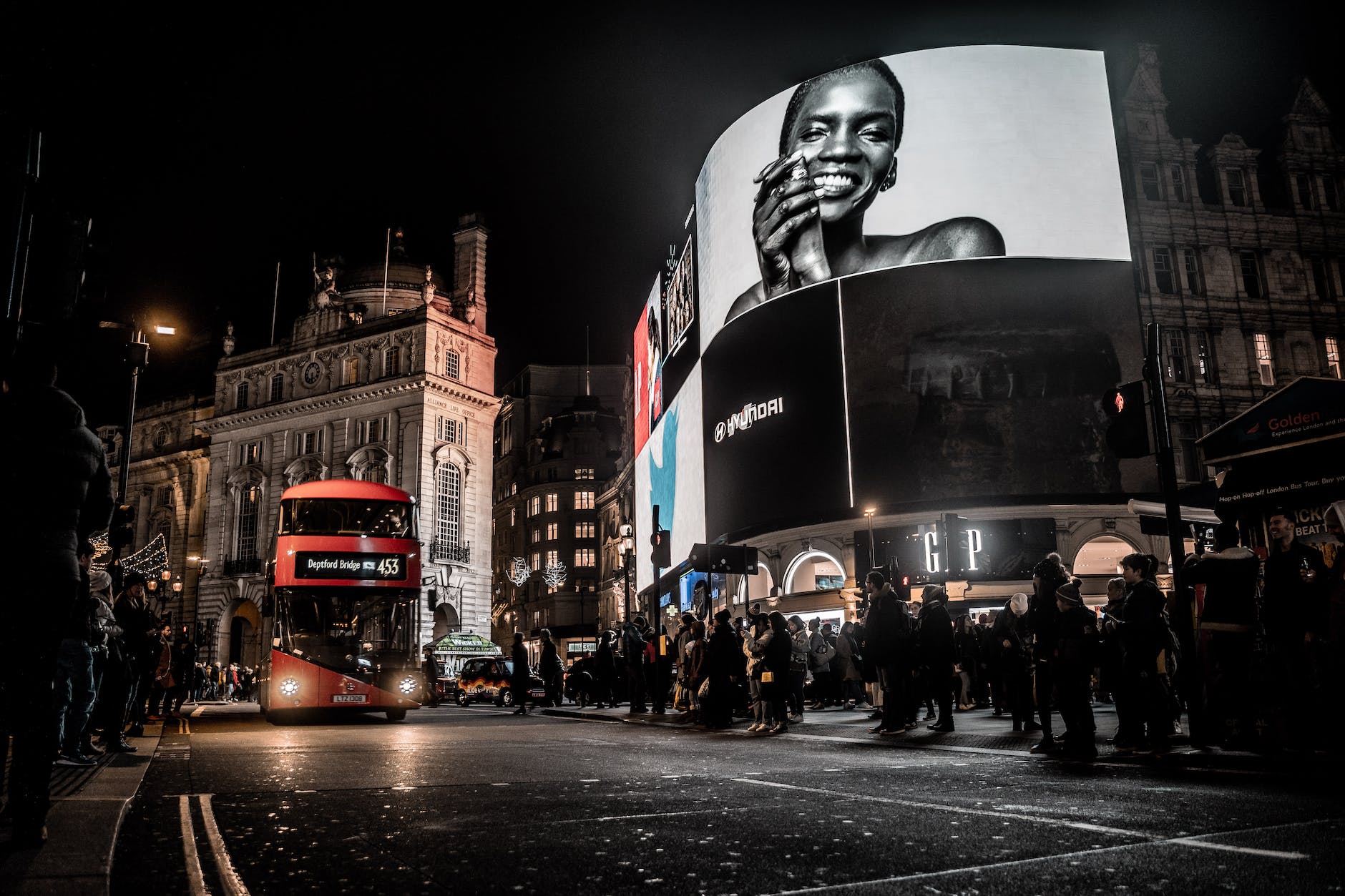Introduction
In the realm of advertising, the provocative adage “sex sells” has long been a contentious yet potent tool. Rooted in the belief that sexual content garners attention and stirs emotions, this method has been employed across various campaigns, often sparking debate. While it can enhance brand recall and forge emotional connections, its effectiveness is contingent on the audience, cultural norms, and product relevance. However, it’s not the sole strategy in a marketer’s arsenal.
Alternative methods abound, each with unique merits. Humor injects relatability and enjoyment, while emotional appeals forge deeper bonds. Celebrity endorsements lend credibility, and shock value captures attention, albeit with caution. A Unique Value Proposition (UVP) clarifies a product’s distinctiveness, and vivid visuals captivate the eye. Storytelling engrosses audiences, and music embeds brands in memory. Social proof builds trust, scarcity and urgency incite action, and interactive experiences deepen engagement. Challenges and contests foster community involvement.
Each method, including “sex sells,” has its place, shaped by the product, audience, and brand ethos. The key lies in strategic selection and nuanced execution, ensuring that the chosen method aligns with the brand’s values and resonates with its audience.
Why use it?
The phrase “sex sells” is a common adage in the marketing and advertising industry, suggesting that products or services can be marketed more effectively by associating them with sexual content or themes. This concept is based on the idea that sex is a fundamental human interest and can attract attention and evoke emotional responses, which can be leveraged to make advertisements more memorable and products more desirable.
Here are several reasons why sex is often used in marketing:
- Attention-Grabbing: Sexual content tends to stand out and grab people’s attention amidst a sea of other advertisements. In a crowded marketplace, anything that makes an ad more noticeable can be seen as an advantage.
- Emotional Response: Sexually suggestive content can evoke strong emotional responses, such as arousal, curiosity, or even controversy. These emotions can create a stronger connection between the consumer and the advertisement or brand.
- Memory and Recall: Because of the strong emotional responses and attention-grabbing nature, ads that use sex are often more memorable. This can increase brand recall and recognition.
- Association with Desirable Qualities: By associating a product with sex or attractiveness, marketers aim to transfer those desirable qualities to the product itself. For example, a perfume ad might suggest that wearing the fragrance will make the wearer more attractive or desirable.
- Targeting Specific Audiences: In some cases, sexual content is used to specifically target demographic groups that are believed to respond more strongly to such messages, such as young adults.
However, it’s important to note that the effectiveness of using sex in advertising can vary greatly depending on the product, the target audience, and cultural norms. While it can be effective in some contexts, it can also backfire or be seen as inappropriate or offensive in others. In recent years, there has been a shift in some sectors of the advertising industry towards more inclusive and less objectifying representations of people, as consumer values evolve and there is a greater emphasis on social responsibility and respect for individuals.
Moreover, the use of sex in advertising is subject to legal and regulatory constraints in many countries, which can limit its application or dictate the manner in which it can be used. As a result, while “sex sells” is a well-known phrase in marketing, its application is nuanced and must be carefully considered in the context of each advertising campaign.
Where has it been used?
Over the years, there have been numerous examples of products in the USA that have been advertised using sexual themes or imagery. Here are five notable examples:
- Calvin Klein: Calvin Klein has a long history of using sexually suggestive advertising, especially for its line of jeans and underwear. One of the most famous campaigns featured a young Brooke Shields in the early 1980s with the tagline, “You want to know what comes between me and my Calvins? Nothing.”
- Axe Body Spray (Lynx in the UK): Axe has been known for its commercials that imply men become irresistibly attractive to women after using their products. These ads often feature women being magnetically drawn to men who have used Axe body spray.
- GoDaddy: The web hosting company GoDaddy became infamous for its Super Bowl commercials that featured sexually suggestive content. The ads often included scantily clad women and implied sexual situations, which were intended to create buzz and controversy.
- Carl’s Jr. / Hardee’s: The fast-food chains have used sexually suggestive advertising in their campaigns, most notably featuring models and celebrities like Paris Hilton, Kate Upton, and Kim Kardashian eating burgers in a provocative manner.
- Victoria’s Secret: The lingerie brand is well-known for its annual fashion show and its advertisements featuring models known as “Victoria’s Secret Angels.” The brand’s marketing heavily relies on the sex appeal of its products and models to attract customers.
These examples illustrate how sexual themes have been used to market a wide range of products in the USA. However, it’s worth noting that public attitudes towards such advertising tactics can shift over time, and what was once considered acceptable or effective may no longer resonate with consumers in the same way. As a result, many brands have evolved their marketing strategies to be more inclusive and less reliant on sexual imagery.
Alternative Marketing Strategies
In addition to using sexual themes, marketers employ a vast number and variety of other strategies to grab attention and make their advertisements memorable. Here are several alternative methods:
- Humor: Funny advertisements can be highly effective. They grab attention, make the brand seem more relatable, and can significantly increase recall. Humor can also create a positive association with the brand.
- Emotional Appeal: Ads that evoke strong emotions—such as happiness, sadness, or nostalgia—can be very powerful. They can create a deep connection between the consumer and the brand, making the advertisement more memorable.
- Celebrity Endorsements: Featuring celebrities or influencers in advertisements can attract attention due to their fame and appeal. Consumers may be more likely to notice and trust a product that is endorsed by someone they admire.
- Shock Value: Some advertisements use shocking or provocative content that is not sexual in nature. This could include surprising facts, startling images, or controversial statements. While this can be attention-grabbing, it must be used carefully to avoid alienating the audience.
- Unique Value Proposition (UVP): Clearly communicating what makes a product or service unique, superior, or valuable can capture attention. If the UVP resonates with the target audience’s needs or desires, it can be a powerful way to stand out from competitors.
- Vivid Colors and Bold Graphics: Visually striking advertisements can catch the eye. Bright colors, high-contrast images, and bold typography are all techniques that can make an ad more noticeable.
- Storytelling: Ads that tell a story can be highly engaging and memorable. A good narrative can draw viewers in and keep them interested, making the advertisement—and by extension, the brand—more memorable.
- Interactive and Experiential Marketing: Creating interactive ads or experiences that consumers can engage with can be a great way to grab attention. This could include augmented reality experiences, interactive billboards, or online quizzes.
- Music and Jingles: Catchy music or jingles can make an advertisement more memorable. A well-chosen song or a catchy tune can stick in consumers’ minds long after they’ve seen the ad.
- Scarcity and Urgency: Ads that communicate limited-time offers or limited availability can create a sense of urgency, prompting consumers to pay attention and act quickly.
- Social Proof: Including customer testimonials, reviews, or user-generated content can attract attention by providing evidence that others have had positive experiences with the brand or product.
- Challenges and Contests: Engaging the audience with challenges, contests, or giveaways can be an effective way to grab attention and encourage interaction with the brand.
These methods can be used individually or in combination to create effective marketing campaigns. The key is to understand the target audience and what will resonate with them, as well as to ensure that the chosen method aligns with the brand’s values and messaging.
An example: Farmer’s Choice
I wanted to explore how a brand of marmalade called “Farmer’s Choice” which is based in the Cotswolds, UK would use each of the above attention-grabbing methods to create a marketing statement, so here goes.
- Unique Value Proposition (UVP): “Farmer’s Choice marmalade brings the authentic taste of the Cotswolds to your breakfast table, crafted from hand-picked, locally sourced fruits and a century-old family recipe.”
- Vivid Colors and Bold Graphics: “Brighten up your mornings with the vibrant, golden hues of Farmer’s Choice marmalade—where every spoonful is a burst of sunshine!”
- Celebrity Endorsements: “Join renowned British chef Oliver Smith as he chooses Farmer’s Choice for his award-winning breakfast recipes—taste the marmalade that’s winning hearts and palates across the nation!”
- Humor: “Spread the joy with Farmer’s Choice marmalade! It’s so good, even the oranges can’t believe they’re not still on the tree!”
- Emotional Appeal: “Relive the warmth of your grandmother’s kitchen with every jar of Farmer’s Choice marmalade, where tradition and love are spread in every spoonful.”
- Storytelling: “Once upon a time in the rolling hills of the Cotswolds, a family’s passion for the perfect marmalade gave rise to Farmer’s Choice—where every jar tells a story of heritage and craftsmanship.”
- Music and Jingles: “Start your day the right way, with a melody of flavors from Farmer’s Choice marmalade—’The Spread That Gets You Out of Bed!'”
- Social Proof: “Thousands of breakfast lovers can’t be wrong! Farmer’s Choice is the UK’s top-rated marmalade for its unbeatable homemade taste.”
- Scarcity and Urgency: “Don’t miss out on the limited edition Farmer’s Choice marmalade, made from this season’s finest Cotswold oranges. Get yours before it’s gone!”
- Interactive and Experiential Marketing: “Join us at the Farmer’s Choice interactive pop-up in the heart of the Cotswolds and discover the art of marmalade making from our master artisans.”
- Shock Value: “Shake up your senses with Farmer’s Choice marmalade—bolder, brighter, and more tantalizing than any marmalade you’ve ever tasted!”
- Challenges and Contests: “Enter the Farmer’s Choice Breakfast Challenge! Share your most creative marmalade dish using #FarmersChoiceFeast for a chance to win a gourmet Cotswolds getaway.”
And now the sexual themed one.
Indulge in the seductive sweetness of Farmer’s Choice marmalade. Each jar is a sensual symphony of the finest Cotswolds oranges, lovingly caressed by the morning sun and handcrafted to awaken your senses. Start your day with an irresistible spread that’s as tantalizing as it is tasteful.
You can make your own mind up which one you refer.


